company | Brands
See All Jobs
Healthcare Professionals
Salary & Benefits
Referral Program
Download Our Mobile App
Workforce Solutions
Working with USN
Talent Request
Have an account?
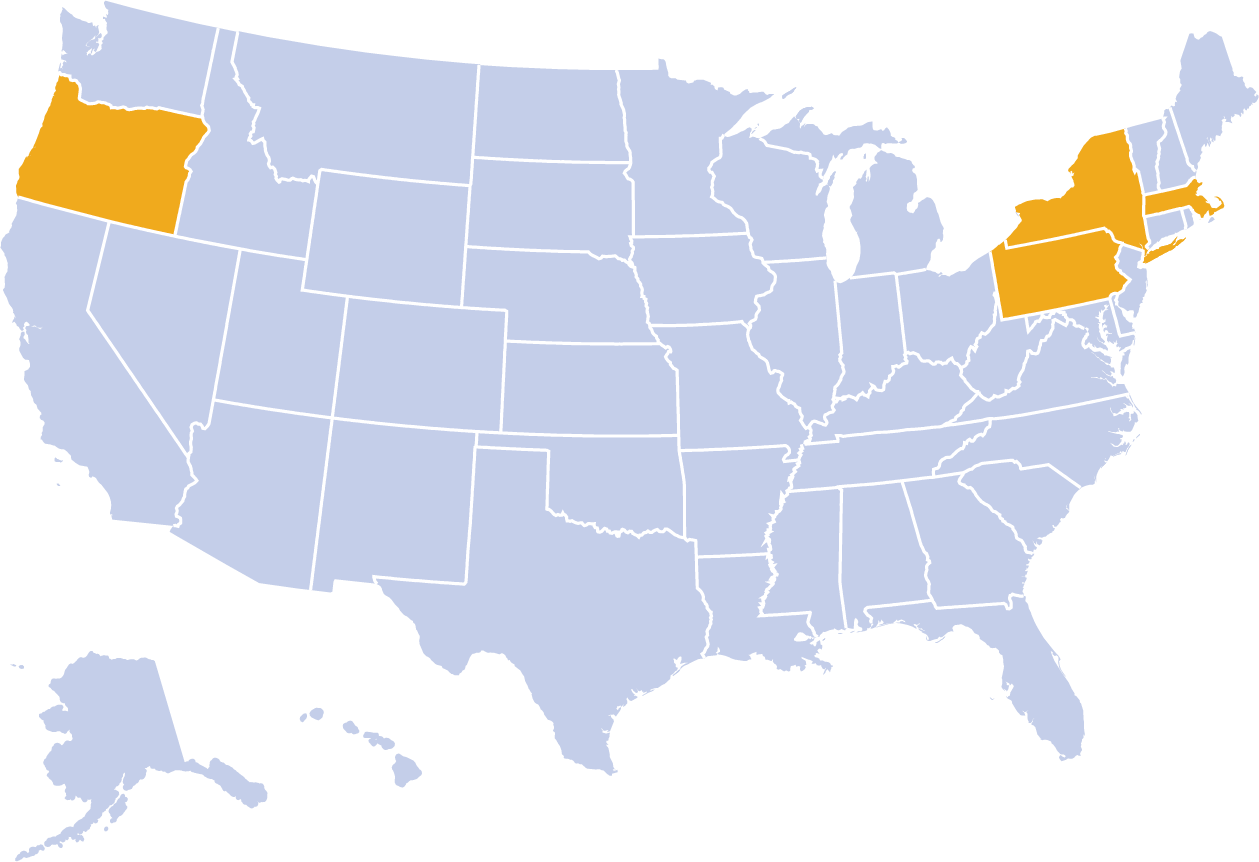


Nursing Care Facilities Add 2,800 Workers Amid ‘Growing But Slowing’ Labor Market
Nursing care facilities added about 2,800 jobs in November 2022, as the health care sector overall saw payrolls increase by about 45,000 workers.
Hiring in nursing care slowed down from October, when nursing homes added about 4,100 new workers. Job growth overall slowed in November, with nonfarm payrolls increasing by 263,000, compared with average growth of 282,000 over the previous three months and the year-to-date average of 392,000.
“The monthly gain paints an image of a still growing, but slowing, labor market,” Beth Mace, chief economist at the National Investment Center for Seniors Housing & Care (NIC), wrote in a Friday blog post on the latest jobs data from the Bureau of Labor Statistics (BLS).
While nursing care facilities did add workers in November, the sector is lagging other parts of the health care continuum. Home health services added 6,600 workers last month, and community care facilities for the elderly added 5,300 workers.
Overall job growth in November exceeded expectations. Economists surveyed by Dow Jones had called for non-farm payrolls to increase by about 200,000, as CNBC reported . With tight labor markets driving wage growth and fueling inflation, the Federal Reserve might be inclined to continue ratcheting up interest rates.
“It is looking for the job market to slow significantly and for the inflation rate to be tempered before it will adjust its aggressive stance on monetary policy,” Mace wrote of the Fed.
Staffing challenges weigh on occupancy
Acute staffing shortages in nursing care facilities have constrained occupancy growth in 2022. Skilled nursing occupancy declined by 40 basis points, to 78.4%, between August and September, according to NIC data released on Dec. 1.
“Some challenges do persist as staffing shortages continue to create difficulties within skilled nursing properties limiting the ability to admit new patients in some markets. However, the current occupancy trend does suggest that demand for skilled nursing properties is recovering, given the 172-basis point increase from January to September this year (2022),” wrote NIC Senior Principal Bill Kauffman.
Between September and October, skilled nursing facility occupancy increased by 40 basis points, according to a BMO Capital Markets analysis of Centers for Medicare & Medicaid Services (CMS) data.
While BMO analysts described post-acute occupancy growth as continuing at a “modest pace,” reduced census, lack of staff and other challenges are weighing on the sector.
Indeed, as the workforce crisis drags on, more nursing homes are closing their doors. At least 60 nursing facilities in Texas, representing about 2% of the Lone Star State’s total facilities, have closed in 2022, according to a report from the state’s Health and Human Services agency.
“I would say easily, the staffing and the workforce crisis that we’re dealing with … is easily the most significant challenge that I’ve seen since I’ve been involved in this profession,” Kevin Warren, president and CEO of Texas Health Care Association, recently told NBC affiliate KXAN.
In fact, staffing issues are a prime factor behind nursing bed reduction nationwide, and particularly in rural areas.
The labor market situation is fueling concerns about the Biden administration’s plan to implement federal staffing minimums for nursing homes. Industry advocates are calling for higher reimbursement rates, particularly in Medicaid, to fund additional hiring, as well as more resources to support recruitment and retention programs.
Companies featured in this article:
BMO Capital Markets , Bureau of Labor Statistics , NIC , Texas Health Care Association
Tim Mullaney
If he’s not in the newsroom, Tim likes to be on the tennis court or traveling to a new destination. Recent highlights include Sri Lanka and Iceland.

You May Also Like
Related stories, [updated] judge rejects bid to halt nursing home staffing rule, cms’ latest guidance plagued by lack of clarity on infection prevention and staffing, leading to concerns of unfair survey citations, executive outlook 2025: while ma ‘tightens the screws’ on nursing homes, sector focuses on reform, workforce solutions, i-snps.
Our 2020 Cath/EP/IR Wage Survey is underway. GIVE US YOUR VALUABLE INPUT »
Springboard / Hot Jobs / Hot Jobs – November 2022

Hot Jobs – November 2022
Published November 2, 2022
Check out Springboard Healthcare’s latest list of hot Cath Lab, EP, and IR positions for RNs and technologists in dream destinations across the country. To find out more about these high-paying jobs, chat with one of our amazing relationship managers today by calling (866) 465-6286 or visit our job search page to view all of our awesome opportunities.
Highest Paying Cath Lab RN Jobs
$4500 per week – La Mesa, CA $4500 per week – Hanover, PA $4500 per week – Pittsburgh, PA $4500 per week – Williamsport, PA $4500 per week – Somerset, PA $4300 per week – Sacramento, CA $4100 per week – Boston, MA $3900 per week – New Haven, CT $3900 per week – Lebanon, PA
Highest Paying Cath Lab Tech Jobs
$3600 per week – Northridge, CA $3600 per week – Santa Maria, CA $3500 per week – Long Beach, CA $3500 per week – Travis Air Force Base, CA $3500 per week – Sarasota, FL $3400 per week – San Diego, CA $3300 per week – Woodbridge, VA $3300 per week – Springfield, OR $3100 per week – Pittsburgh, PA
Highest Paying Electrophysiology RN Jobs
$4500 per week – Pittsburgh, PA $4300 per week – Sacramento, CA $3800 per week – Atlanta, GA $3500 per week – York, PA $3400 per week – Rochester, NY $3300 per week – Manchester, NH
Highest Paying Electrophysiology Tech Jobs
$3800 per week – Stanford, CA $3200 per week – Rochester, NY $2900 per week – New York, NY $2900 per week – Bend, OR $2800 per week – Lawrenceville, GA $2600 per week – Falls Church, VA $2400 per week – Louisville, KY $2300 per week – Indianapolis, IN $2300 per week – Lexington, KY
Highest Paying Interventional Radiology RN Jobs
$4500 per week – Pittsburgh, PA $4400 per week – Long Beach, CA $4000 per week – Sleepy Hallow, NY $3900 per week – New Haven, CT $3600 per week – York, PA $3400 per week – Rochester, NY $3300 per week – Tulsa, OK $3300 per week – Kingston, PA $3200 per week – Portland, OR
Highest Paying Interventional Radiology Tech Jobs
$3700 per week – Carmel, NY $3600 per week – Hartford, CT $3300 per week – Sacramento, CA $3300 per week – San Luis Obispo, CA $3100 per week – Boynton Beach, FL $3100 per week – Pittsburgh, PA $3100 per week – Rochester, NY $2900 per week – Randallstown, MD $2900 per week – Roanoke, VA
Jobs fill fast, so secure your opportunity to apply by filling out our quick application or calling (866) 465-6286.
Related Posts

July 10, 2023 | Hot Jobs
Hot Jobs – July 2023
Check out Springboard Health’s latest list of hot Cath Lab, EP, IR, and diagnostic imaging positions for RNs and techs in dream destinations across the country. To find out more about these high-paying jobs, chat with one of our amazing relationship managers today by calling (866) 465-6286 or visit our job search page to view […]
Read more >

June 22, 2023 | Hot Jobs
Hot Jobs – June 2023
READ MORE POSTS >

Nursing Shortage Fact Sheet
The U.S. is projected to experience a shortage of Registered Nurses (RNs) that is expected to intensify as Baby Boomers age and the need for health care grows. Compounding the problem is the fact that nursing schools across the country are struggling to expand capacity to meet the rising demand for care. The American Association of Colleges of Nursing (AACN) is working with schools, policy makers, nursing organizations, and the media to bring attention to this healthcare concern. AACN is leveraging its resources to shape legislation, identify strategies, and form collaborations to address the shortage.
Download Fact Sheet [PDF]
Current and Projected Shortage Indicators
- According to the Bureau of Labor Statistics’ Employment Projections 2022-2032, the Registered Nursing (RN) workforce is expected to expand by 6% over the next decade. The RN workforce is anticipated to grow from 3.1 million in 2022 to 3.3 million in 2032, an increase of 177,440 nurses. The Bureau also projects 193,100 openings for RNs each year through 2032 when nurse retirements and workforce exits are factored into the number of nurses needed in the U.S.
- The Advanced Practice Registered Nurse (APRN) workforce, including Nurse Practitioners, Nurse Anesthetists, and Nurse Midwives, is expected to grow much faster than average for all occupations, by 38% from 2022 through 2032, according to the BLS’ Occupational Outlook Handbook. Approximately 29,200 new APRNs, which are prepared in master’s and doctoral programs, will be needed each year through 2032 to meet the rising demand for primary and specialty care.
- According to a Health Workforce Analysis published by the Health Resources and Services Administration (HRSA) in November 2022, federal authorities project a shortage of 78,610 full-time RNs in 2025 and a shortage of 63,720 full-time RNs in 2030. The ten states with the largest projected nursing shortage in 2035 are Washington (26%), Georgia (21%), California (18%), Oregon (16%), Michigan (15%), Idaho (15%), Louisiana (13%), North Carolina (13%), New Jersey (12%), and South Carolina (11%). Data for each state may be accessed through HRSA’s Workforce Projections Dashboard .
- In April 2022, Dr. David Auerbach and colleagues published a nursing workforce analysis in Health Affairs , which found that total supply of RNs decreased by more than 100,000 from 2020 to 2021 – the largest drop than ever observed over the past four decades. A significant number of nurses leaving the workforce were under the age of 35, and most were employed in hospitals.
- The Institute of Medicine in its landmark report on The Future of Nursing called for increasing the number of baccalaureate-prepared nurses in the workforce to at least 80% to enhance patient safety. The current nursing workforce falls short of this recommendation, though more than two-thirds of RNs are educated at the baccalaureate or graduate level. The exact percentage has been reported as 69% by HRSA and 71.7% by the National Council of State Boards of Nursing .
- In March 2023, the International Council of Nurses (ICN) released a report calling for the worldwide shortage of nurses to be treated as a global health emergency. The report, titled Recover to Rebuild: Investing in the Nursing Workforce for Health System Effectiveness , details the impact that the pandemic had on the world’s nursing workforce, nurse burnout, and access to care. The authors call for protecting and investing in nurses as key to health system recovery.
Contributing Factors Impacting the Nursing Shortage
Nursing school enrollment is not growing fast enough to meet the projected demand for RN and APRN services.
Though enrollment in entry-level baccalaureate programs in nursing increased by 0.3% in 2023, AACN did report drops in both PhD and master’s nursing programs by 3.1% and 0.9%, respectively. These trends are raising concerns about the capacity of nursing schools to meet the projected demand for nursing services, including the need for more nurse faculty, researchers, and primary care providers.
A shortage of nursing school faculty is restricting nursing program enrollments.
- According to AACN’s report on 2023-2024 Enrollment and Graduations in Baccalaureate and Graduate Programs in Nursing , U.S. nursing schools turned away 65,766 qualified applications (not applicants) from baccalaureate and graduate nursing programs in 2023 due to insufficient number of faculty, clinical sites, classroom space, and clinical preceptors, as well as budget constraints.
- According to a Special Survey on Vacant Faculty Positions released by AACN in October 2023, a total of 1,977 full-time faculty vacancies were identified in a survey of 922 nursing schools with baccalaureate and/or graduate programs across the country (84.6% response rate). Besides the vacancies, schools cited the need to create an additional 103 faculty positions to accommodate student demand. The data show a national nurse faculty vacancy rate of 7.8%. Most of the vacancies (79.8%) were faculty positions requiring or preferring a doctoral degree.
A significant segment of the nursing workforce is nearing retirement age.
- According to the 2022 National Sample Survey of Registered Nurses , 23% of RNs working in outpatient, ambulatory, and clinical settings have retired or plan to retire over the next 5 years. While hospitals had the lowest share of nurses who have retired or plan to retire over the next 5 years (15.1%), nurses employed in this setting had the lowest levels of job satisfaction.
- Published October 4, 2023, by the Journal of the American Medical Association , Dr. Melissa Suran published an article titled Overworked and Understaffed, More Than 1 in 4 US Nurses Say They Plan to Leave the Profession . The author looks at the latest data on nurses’ intent to leave their positions and how burnout and understaffing are impacting the workforce.
- In a Health Affairs blog posted in May 2017, Dr. Peter Buerhaus and colleagues project than more than 1 million registered nurses will retire from the workforce by 2030.
Changing demographics signal a need for more nurses to care for our aging population.
- The U.S. Census Bureau reported that number of Americans aged 65 and older is projected to increase from 58 million in 2022 to 82 million by 2050 (23% of the population). With larger numbers of older adults, there will be an increased need for geriatric care, including care for individuals with chronic diseases and comorbidities.
Amplified by the pandemic, insufficient staffing is raising the stress level of nurses, impacting job satisfaction, and driving many nurses to leave the profession.
- According to data published in Nurse.com’s 2022 Nurse Salary Research Report , 29% of nurses across all license types considering leaving in 2021, compared with 11% in 2020.Among nurses who are considering leaving the profession, higher pay was the most influential motivation to stay, followed by better support for work-life balance and more reasonable workload.
- In March 2022, the American Nurses Foundation and the American Nurses Association released the results of its COVID-19 Impact Assessment Survey , which found that 52% of nurses are considering leaving their current position due primarily to insufficient staffing, work negatively affecting health and well-being, and inability to deliver quality care. In addition, 60% of acute care nurses report feeling burnt out, and 75% report feeling stressed, frustrated, and exhausted.
- In September 2021, the American Association of Critical-Care Nurses reported survey findings which show 66% of acute care nurses have considered leaving nursing after their experiences during the pandemic.
Impact of Nurse Staffing on Patient Care
Many scientific studies point to the connection between adequate levels of registered nurse staffing and safe patient care.
- In November 2021, new research in Nursing Outlook examined Variations in Nursing Baccalaureate Education and 30-day Inpatient Surgical Mortality . Researchers found that having a higher proportion of baccalaureate-prepared nurses (BSN) in hospital settings, regardless of educational pathway, is associated with lower rates of 30-day inpatient surgical mortality. The findings support promoting multiple BSN educational pathways.
- In the July 2017 issue of BMJ Quality & Safety , the international journal of healthcare improvement, Dr. Linda Aiken and her colleagues released findings from a study of acute care hospitals in Belgium, England, Finland, Ireland, Spain, and Switzerland, which found that a greater proportion of professional nurses at the bedside is associated with better outcomes for patients and nurses. Reducing nursing skill mix by adding assistive personnel without professional nurse qualifications may contribute to preventable deaths, erode care quality, and contribute to nurse shortages.
- In a study published in the journal BMJ Quality & Safety in May 2013, researcher Heather L. Tubbs-Cooley and colleagues observed that higher patient loads were associated with higher hospital readmission rates. The study found that when more than four patients were assigned to an RN in pediatric hospitals, the likelihood of hospital readmissions increased significantly.
- In the August 2012 issue of the American Journal of Infection Control , Dr. Jeannie Cimiotti and colleagues identified a significant association between high patient-to-nurse ratios and nurse burnout with increased urinary tract and surgical site infections. In this study of Pennsylvania hospitals , the researchers found that increasing a nurse’s patient load by just one patient was associated with higher rates of infection. The authors conclude that reducing nurse burnout can improve both the well-being of nurses and the quality of patient care.
- In a study publishing in the April 2011 issue of Medical Care , Dr. Mary Blegen and her colleagues from the University of California, San Francisco found that higher nurse staffing levels were associated with fewer deaths, lower failure-to-rescue incidents, lower rates of infection, and shorter hospital stays.
- In March 2011, Dr. Jack Needleman and colleagues published findings in the New England Journal of Medicine , which indicate that insufficient nurse staffing was related to higher patient mortality rates. These researchers analyzed the records of nearly 198,000 admitted patients and 177,000 eight-hour nursing shifts across 43 patient-care units at large academic health centers. The data show that the mortality risk for patients was about 6% higher on units that were understaffed as compared with fully staffed units. In the study titled Nurse Staffing and Inpatient Hospital Mortality , the researchers also found that when a nurse’s workload increases because of high patient turnover, mortality risk also increases.
- A growing body of research clearly links baccalaureate-prepared nurses to lower mortality and failure-to-rescue rates. The latest studies published in the journals Health Services Research in August 2008 and the Journal of Nursing Administration in May 2008 confirm the findings of several previous studies which link education level and patient outcomes. Efforts to address the nursing shortage must focus on preparing more baccalaureate-prepared nurses in order to ensure access to safe patient care.
- In March 2007, a comprehensive report initiated by the Agency for Healthcare Research and Quality was released on Nursing Staffing and Quality of Patient Care . Through this meta-analysis, the authors found that the shortage of registered nurses, in combination with an increased workload, poses a potential threat to quality. Increases in registered nurse staffing was associated with reductions in hospital-related mortality and failure to rescue as well as reduced length of stays.
- A shortage of nurses prepared at the baccalaureate level is affecting health care quality and patient outcomes. In a study published September 24, 2003 , in the Journal of the American Medical Association (JAMA), Dr. Linda Aiken and her colleagues at the University of Pennsylvania identified a clear link between higher levels of nursing education and better patient outcomes. This extensive study found that surgical patients have a “substantial survival advantage” if treated in hospitals with higher proportions of nurses educated at the baccalaureate or higher degree level. In hospitals, a 10% increase in the proportion of nurses holding BSN degrees decreased the risk of patient death and failure to rescue by 5%.
- AACN is committed to working with the higher education and healthcare community to prepare more highly educated nurses in sufficient numbers to meet the needs of the nation’s diverse patient population. To address the nursing shortage, AACN is advocating for federal legislation and increased funding for nursing education ( Title VIII , Future Advancement of Academic Nursing Act ); promoting a post-baccalaureate nurse residency program to aid in nurse retention; encouraging innovation in nursing programs, including the development of fast-track programs (second-degree BSN and MSN programs; baccalaureate to doctoral); and working with partner organizations to highlight careers in nursing, including those requiring graduate level preparation.
- Since 2010, AACN has operated NursingCAS, the nation’s centralized application service for nursing education programs that prepare nurses for entry-level and advanced roles. One of the primary reasons for launching NursingCAS was to ensure that all vacant seats in schools of nursing are filled to better meet the nation’s need for RNs, APRNs, and nurse faculty.
Efforts to Address the Nursing Shortage
- In June 2022, the National Council of State Legislatures issued a brief profiling different legislative approaches states are using to address the nursing shortage, including adapting scope of practice laws and offering financial incentives for preceptors.
- In a report on How To Ease the Nursing Shortage in America released in May 2022, the Center for American Progress calls for bold policies toward solving the nursing shortage to ensure that more patients with access to safe, high-quality nursing services. The report highlights how federal and state policymakers can address the shortage through coordinated planning, action, and investment.
- Many statewide initiatives are underway to address both the shortage of RNs and nurse educators. For example, in October 2022, the University of Minnesota and Minnesota State joined forces to create Coalition for Nursing Equity and Excellence, which will work with every school of nursing in the state, healthcare providers, and others to increase enrollment in nurse education programs, expand equity in the nursing workforce, and increase student success. Additional initiatives are also underway in Connecticut , Florida , Louisiana , Missouri , and other states.
- Nursing schools are forming strategic partnerships and seeking private support to help expand student capacity. For example, Shenandoah University announced in March 2023 a new collaboration with Valley Health and the Virginia Hospital and Healthcare Association to address the region’s nursing shortage through a program that leverages retiring nurses and simulation to create a sustainable pathway into nursing. See also efforts launched by Idaho State University and Kootenai Health; Illinois College and Memorial Health; Emory University and the Georgia Nursing Leadership Coalition; Washington State University and Providence Health & Services; and the University of Oklahoma and area schools.
Recent Articles on the Nursing Shortage
- Buerhaus, P.I., Staiger, D.O., Auerbach, D.I., Yates, C., & Donelan, K. (2022, January). Nurse employment during the first fifteen months of the COVID-19 pandemic. Health Affairs , 41(1).
- Buerhaus, P.I. (2021, September/October). Current nursing shortages could have long-lasting consequences: Time to change our present course. Nursing Economics , 39(5), 247-250.
- Firth, S. (2022, May 16). More Support Needed to Shore Up Nurse Pipeline, Experts Say . MedPage Today .
- Suran, M. (2023, October 23). Overworked and Understaffed, More Than 1 in 4 US Nurses Say They Plan to Leave the Profession . JAMA Medical News , 330(16), 1512-1514. doi:10.1001/jama.2023.10055
Updated: May 2024
Robert Rosseter [email protected]
Sign up for VA Careers news

An official website of the United States government
Here’s how you know
Official websites use .gov A .gov website belongs to an official government organization in the United States.
Secure .gov websites use HTTPS A lock ( Lock A locked padlock ) or https:// means you’ve safely connected to the .gov website. Share sensitive information only on official, secure websites.
We’re here anytime, day or night – 24/7
If you are a Veteran in crisis or concerned about one, connect with our caring, qualified responders for confidential help. Many of them are Veterans themselves.
- Call 988 and press 1
- Text to 838255
- Chat confidentially now
- Call TTY if you have hearing loss 1-800-799-4889
Get more resources at VeteransCrisisLine.net .
Our newsletters offer the latest about working at VA, delivered right to your inbox.
Nursing jobs
Nurses like you are at the heart of VA’s patient-centered standard of care. Find a job that makes a lasting difference in the lives of Veterans and gives you the work/life balance you crave.
Nursing job openings
Take a look at all VA can offer you, and pursue a nursing opportunity that will push your talent to exciting new heights.
Here are some sample USAJOBS searches we recommend to get you started.
- All nursing jobs
- Registered nurses
- Clinical nurse specialists
- Nurse anesthetists
- Nursing assistants
- Travel nurses
- Nurse executives
- Psychiatric nurses
- Nurse practitioners
- Licensed practical/vocational nurses
My mission every day is to come into work and help one person. If I help one person everyday, that’s 365 people that I’ve helped in a year. Lauran Warburton, RN Admissions Coordinator
A prescription for success
Enjoy limitless room to grow your career with the variety of care environments, research prospects, and educational support available at VA.
As the nation’s largest employer of nurses, we’re proud to invest in your future and help you realize your greatest potential.
Whether it’s through scholarships and loans, leadership training, residency programs, or partnerships with nursing schools, we have a rich history of helping our nurses forge clear paths to greater success.
We also want to help you balance your work life with your home life, providing flexible schedules, remote work options, and generous vacation and personal leave.
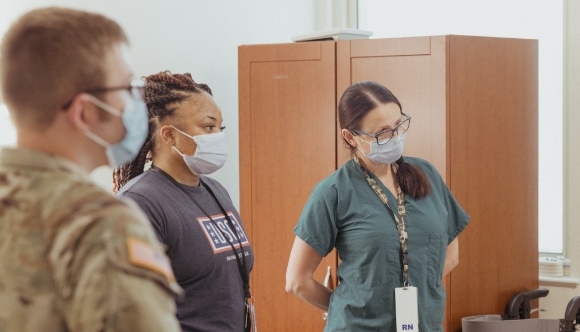
Support your education
We offer loan repayment, scholarships, and more.
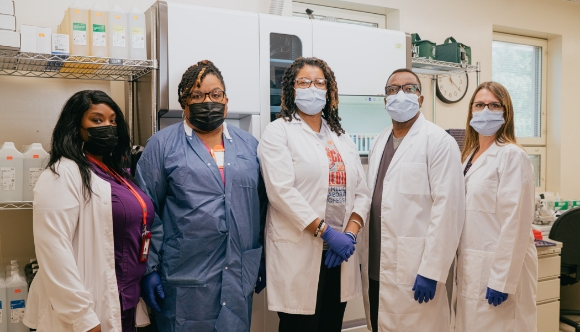
Employment benefits
Find work/life balance, plan for the future, and prepare for the unexpected.
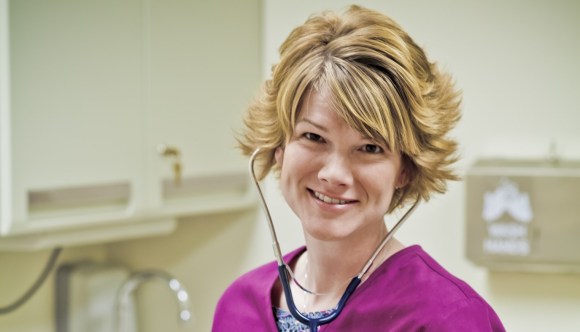
Job application process
This step-by-step guide reviews the process, from the exploration phase all the way through to hiring.

RNTTP Residency
Go from the classroom to practice easily and confidently with the Registered Nurse Transition-to-Practice Residency Program.
Discover the total rewards of a career caring for Veterans
These downloadable flyers and brochures come packed with details about the career benefits of serving Veterans enrolled in VA health care.
Travel Nurse Corps Jobs
Explore the country and VA as a travel nurse. If you’re flexible, mobile, and able to take at least 3 short-term job assignments per year, the Travel Nurse Corps might be for you.
This is a great opportunity to:
- Be hired and on-boarded more quickly
- Find a VA facility that is a good permanent fit for you
- Be a valued member of our health care team
- Explore the country and meet a variety of Veterans
Apply now to the Travel Nurse Corps
Related job news and advice
Looking for the latest career opportunities and advice at the Department of Veterans Affairs?
Read more job news and advice

Home Based Primary Care (HBPC) jobs help Veterans heal

Work at the top of your license as a VA nurse practitioner
We appreciate your feedback.
To help us provide you with a better experience and improve the content on this page, please submit your feedback.
Need help with your job search?
Our recruiters can provide personalized support to help you find a position at VA that fits your skills and lifestyle.
Search by Keyword
Search by Location
Search radius Radius 5 miles 15 miles 25 miles 35 miles 50 miles

A community with the spirit of total commitment.

A career at the heart of total care.

A team that knows the value of total support.

Nursing Careers
At Kaiser Permanente, our nurses are leaders, clinicians, researchers, innovators, and scientists. For more than 70 years, we’ve offered our nurses the opportunity to advance the delivery of excellent, compassionate care for our members. When you choose a career with us, you’ll boldly transform care while improving the health of our communities and nation. As we work towards achieving Magnet recognition by 2025, these jobs will give you even more opportunities to innovate, evolve, and bring to life the KP model of total care.
Explore Opportunities Nursing
Our Nursing Specialties
Surgical services.
Across an array of specialties, you’ll be part of a recognized team of health care experts meeting the diverse needs of our patients, families and communities. That includes working both independently and across disciplines with a focus on safety and quality.
Specialties:
- Ambulatory & Procedural
- Cardiovascular
- Critical Care and Trauma
- Ear, Nose, and Throat
- Gastroenterology /Endoscopy
- General Surgery
- Ophthalmology
- Plastic Surgery
- Short Stay/Same-Day
Become a core part of our organization. This is your chance to be an advocate across our team, supporting a variety of patient populations and specialty care units.
- Cardiovascular Care
- Coronary Care
- Critical Care
- Intensive Care
- Labor & Delivery
- Medical/Surgical
- Neonatal Intensive Care
- Neuro/Surgical
- Neurological Intensive Care
- Operating Room
- Pediatric Intensive Care
- Post Anesthesia Care
- Same Day Surgery
Outpatient Clinics
From outpatient settings to telehealth, you’ll form unique connections with the patients you meet. They’ll look to you to meet critical needs as well as help navigate their health care choices throughout their journey.
- Convenient Care
- Dermatology
- Gastroenterology
- Neurosurgery
- Orthopedics
- Pain Management
- Population Health
- Pulmonology
- Radiation Oncology
Urgent Care, Emergency
Every shift, you’ll have the opportunity to provide true moments of greatness for your patients. These are some of their most critical moments. And you’ll be the one to represent us and our mission when patients need us most.
Specialties
- Acute Behavioral Health
- Disaster Response
- Infectious Disease
- Respiratory
Home Care, Continuum of Care
Be the connection between our hospitals and patients’ homes. This role is about ensuring the best health outcomes beyond our bedsides. That includes collaborating with other disciplines to optimize recovery and empowerment, but you’ll also play an important part in addressing the physical, intellectual, emotional, and social needs of your patient.
- Advanced Medical Care at Home
- End-of-Life Care
- Enteral Nutrition
- Geriatric Care
- Long-Term Care
- Palliative Care
- Parenteral Nutrition
- Pediatric Care
- Skilled Nursing
- Specialty IV Infusions
- Telehealth/Remote Monitoring Program
- Virtual Care
- Wound Care Assessments and Management

Together, we can boldly transform care.
You chose nursing for a reason. At Kaiser Permanente, we share your passion. And we’re working hard to make this the best place to be the nurse you were born to be. See how we make caring, learning, growing and leading part of every nursing career.

View Rehabilitation Service Jobs
Explore Opportunities
What Our People Say

Kimberly, RN
Kaiser Permanente Hawaii
“ In Hawai'i, your community is your family or ‘Ohana.’ As a Kaiser Permanente nurse, I am able to provide extraordinary patient centered care to my Ohana. ”
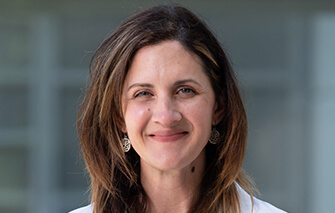
Amber, BSN, RN
Kaiser Permanente NCAL
“ The obstacles of the pandemic never stopped me or the PCCM team from giving all the best care coordination possible, keeping the patient at the center of our purpose here at Kaiser Permanente. ”
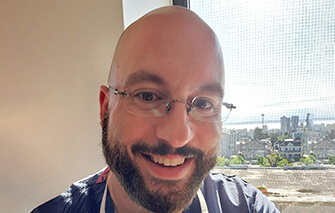
Amos, MAN, RN, PHN, CNAMB, CSSM, CNOR
Kaiser Permanente Washington
“ Kaiser Permanente Washington provides me the environment to experience continued growth and development personally and professionally. My employees and I are able to access the best that our a health care organization has to offer. ”
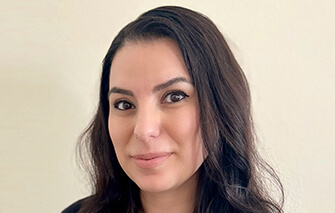
Taguhi, MSN, RN, CNL, SCRN
Kaiser Permanente SCAL
“ Kaiser Permanente provides countless opportunities for personal and professional growth. As an employee, you feel valued and empowered to make changes at different levels of the organization. ”
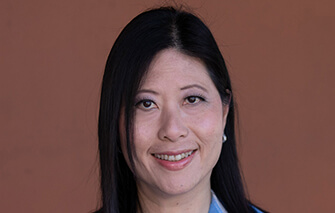
“ Kaiser Permanente has taken me on a personal and educational growth journey. I have learned to display compassion and dedication to patients and patients’ families every day at work. What an honor to be part of Kaiser Permanente. ”
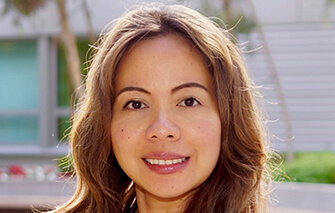
Michelle, MSN, RN
“ I am continuously inspired because I know that with KP, I have a voice and the possibilities are endless for me to make a great impact on my patients, myself, and the people around me. ”
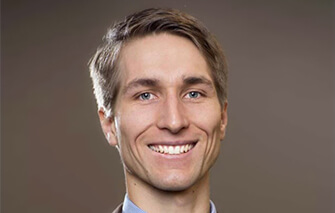
Che, BSN, RN
Kaiser Permanente Northwest
“ I have found that doing the right thing for the patients we serve is synonymous with being part of KP. I could not be more grateful to be part of an organization that truly and consistently puts our patients’ health care needs, concerns and safety first. ”

Jaci, BSN, RN
Kaiser Permanente Colorado
“ Kaiser Permanente’s innovative approach to health care empowers me to practice at the top of scope, while providing me with endless resources to cultivate growth as an individual, professional and leader. ”

Nona, MSN-Ed, RN
Kaiser Permanente Mid Atlantic
“ As a two-time cervical cancer survivor, I am very grateful to work and to be a part of a truly compassionate health care team. Their mission to improve the health of our members and communities is shown each day I come to work, as well as when I was a patient. I am proud to be serving our members with a driven commitment for all to ‘Live well. Be well.' ”
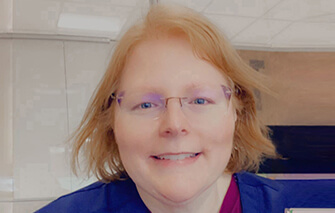
Christina, RN
“ I appreciate the autonomy that I have at Kaiser Permanente and the great team I work with. In primary care we are able to care for the whole person, which is not an option in many areas of health care today. There is also room to grow and advance in my current role and within other departments. ”

Jennifer, BSN, RN, MS-BC
“ I am proud and lucky to be able to work at Kaiser Permanente. It has given me opportunities to grow to believe in myself, provided me the training I needed for professional development, and molded me to be a passionate and caring nurse. ”
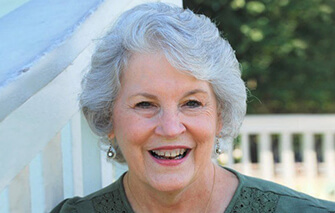
Nicky, RN, BSN
“ Nurses, providers, specialists, pharmacy, IT and other staff work collaboratively to deliver the best care for our patients. After 23 years, I have never regretted working for Kaiser Permanente. ”
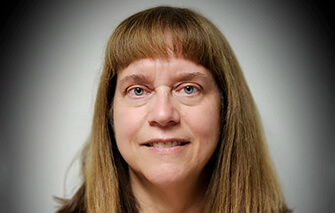
Susan, ADN, RN
“ I am proud to be part of the Labor Management Partnership that Kaiser Permanente developed with the unions and maintained for 24 years. Health care is changing rapidly and the ability to work in partnership guarantees Kaiser Permanente’s commitment to their patients, as well as the company’s longevity. ”
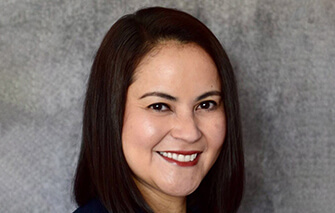
Cristina, MSN, RN, PHN, COS-C
“ Being a nurse at Kaiser Permanente has opened up such opportunities for me for growth – from being a Hospice Nurse and a Quality Nurse to now serving as a Nurse Leader. It is fulfilling and I’m looking forward to seeing where else it will lead me. ”
Top Reasons to Join Our Team
Excellent pay & benefits.
Part of our commitment to wellness means helping you and your family meet your personal, professional, health, and financial goals. That’s why we support you with competitive salaries, retirement plans, wellness programs, and much more.
Reaching Beyond Our Walls
Some of the most vulnerable populations count on us for health care access and beyond. That means you’ll be more than just an advocate for our patients. You’ll also have the chance to be there for the people of the diverse communities we serve.
Focus on Care
You’ll have access to technologies, cutting-edge facilities, and integrated patient systems that will allow you to deliver care on a higher level.
Growth & Development
We’ll be there as you advance your skills and build on your experiences. And we’ll offer hands-on support as you develop your own path as a nurse.
Committed to You
We want you to bring your best self to work. Starting with our leaders, everyone here is committed to your growth, your well-being and making sure your voice is heard.
Strong Networks
Surround yourself with inspiring and collaborative colleagues, ready to share their passions and support you in your work.
More About Kaiser Permanente
Our nursing legacy.
Hear the insightful, compassionate words of some of the first Kaiser Foundation School of Nursing graduates. Their stories still ring true today.
Earning Magnet Status
Follow the journey of two hospitals in Southern California as they work towards earning the prestigious Magnet designation.
Celebrating Nursing Excellence
Hear the stories of our nurses as they faced career challenges that included, among other things, an unprecedented global pandemic.
Nurses Step Up in Crisis
Learn about the history of our nurses stepping up in times of major health challenges, from wars to epidemics and beyond.
Lorem ipsum dolor sit amet, consectetur adipiscing elit. Nulla rutrum dolor eu sapien hendrerit eleifend.
See Jobs (California)
Learn More See Jobs (Washington)
See Jobs (Colorado)
See Jobs (Georgia)
See Jobs (Hawaii)
Mid-Atlantic
See Jobs (Mid-Atlantic)
Learn More See Jobs (Oregon)
Jobs for You
- Save Job Manager II Behavioral Health Psychology - Child & Adolescent Services - San Leandro - 40 hours San Leandro, California
- Save Job Psychiatric Social Worker Riverside, California
- Save Job MSW Social Worker-Urgent Care-Part Time-Day-Olympia Olympia, Washington

Equity, Inclusion, and Diversity

Working Here

Stories and Resources

Our Hiring Process

Executive Leadership
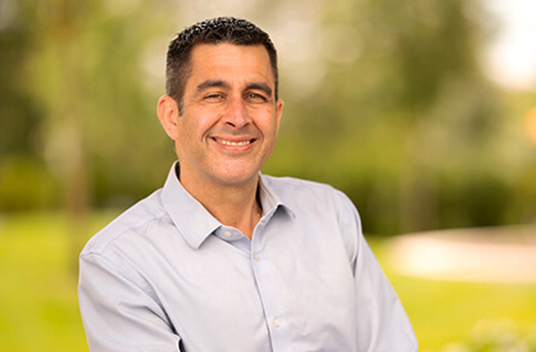
Washington Health Care Careers

Women in Technology

genKP: Kaiser Permanente's Future Leaders
Meet a member of the Kaiser Permanente team at an upcoming career or professional event.
See All Events
Connect With Us
- Visit us on X
- Visit us on Glassdoor
- Visit us on LinkedIn
- Visit us on YouTube
- Visit us on Facebook
Kaiser Permanente
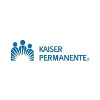
February 23, 2021

"Great Place to Work" Current Employee - AAM in Charleston, SC
I have been working at Kaiser Permanente full-time for more than 10 years
KP is a major contributor to the overall health of our communities Full Review
More Kaiser Permanente Ratings & Reviews (8,724)

IMAGES
COMMENTS
We are often notified of pending job actions and potential strikes, and immediately begin to recruit a team of highly-qualified nurses. Strike nurse job opportunities are updated often, so visit our website regularly to see current information.
Dec 4, 2022 · Nursing care facilities added about 2,800 jobs in November 2022, as the health care sector overall saw payrolls increase by about 45,000 workers. Hiring in nursing care slowed down from October, when nursing homes added about 4,100 new workers.
Registered Nurse (RN) - Labor & Delivery Travel / Contract*. At AMN Healthcare we take care of our travelers! 401 (k) and Flex Spending. Knowledge of principles and practices of organization, administration, fiscal and personnel management essential to the practice of nursing in the larger…
Nov 2, 2022 · Check out Springboard Healthcare’s latest list of hot Cath Lab, EP, and IR positions for RNs and technologists in dream destinations across the country.
499,488 Nursing jobs available on Indeed.com. Apply to Registered Nurse, Licensed Practical Nurse, Nurse Practitioner and more!
According to a Health Workforce Analysis published by the Health Resources and Services Administration (HRSA) in November 2022, federal authorities project a shortage of 78,610 full-time RNs in 2025 and a shortage of 63,720 full-time RNs in 2030.
Reach thousands of skilled nurses ready to be hired! ANA's Career Center gives employers instant access to qualified nurses working in all areas of health care. Post your nursing jobs and search our database to recruit ANA members who represent the top talent in the nursing profession.
Dec 10, 2024 · Nursing job openings. Take a look at all VA can offer you, and pursue a nursing opportunity that will push your talent to exciting new heights. Here are some sample USAJOBS searches we recommend to get you started.
National Center for Health Workforce Analysis November 2022 • Metro areas are projected to have a small surplus of RNs (1% in 2035), while shortages are projected for nonmetro areas (2% in 2035).
Feb 23, 2021 · At Kaiser Permanente, our nurses are leaders, clinicians, researchers, innovators, and scientists. For more than 70 years, we’ve offered our nurses the opportunity to advance the delivery of excellent, compassionate care for our members.